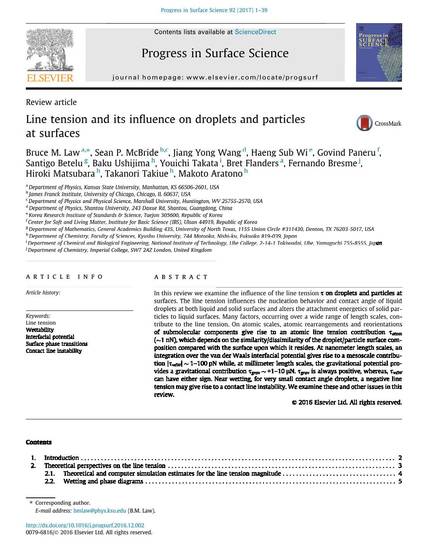
In this review we examine the influence of the line tension s on droplets and particles at surfaces. The line tension influences the nucleation behavior and contact angle of liquid droplets at both liquid and solid surfaces and alters the attachment energetics of solid particles to liquid surfaces. Many factors, occurring over a wide range of length scales, contribute to the line tension. On atomic scales, atomic rearrangements and reorientations of submolecular components give rise to an atomic line tension contribution satom (1 nN), which depends on the similarity/dissimilarity of the droplet/particle surface composition compared with the surface upon which it resides. At nanometer length scales, an integration over the van der Waals interfacial potential gives rise to a mesoscale contribution |svdW| 1–100 pN while, at millimeter length scales, the gravitational potential provides a gravitational contribution sgrav +1–10 lN. sgrav is always positive, whereas, svdW can have either sign. Near wetting, for very small contact angle droplets, a negative line tension may give rise to a contact line instability. We examine these and other issues in this review.

The is the peer-reviewed final submitted manuscript of an article that was published in Progress in Surface Science. The version of record is available at http://dx.doi.org/10.1016/j.progsurf.2016.12.002.
Copyright © 2016 Elsevier Ltd. All rights reserved.